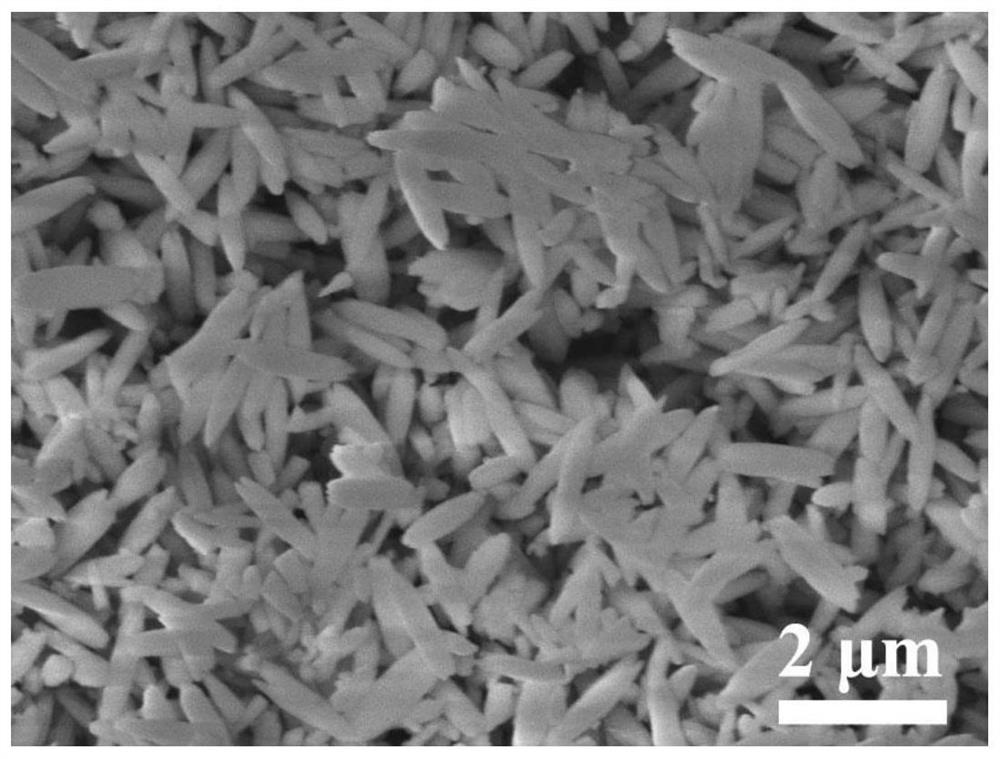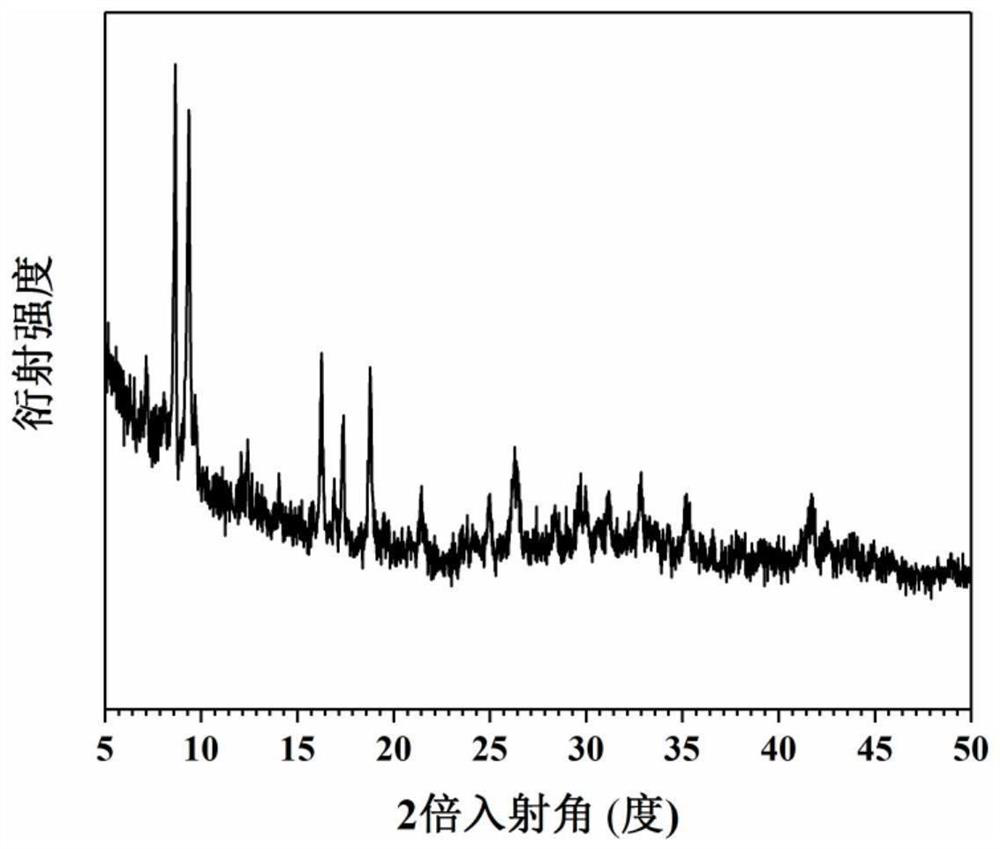CdZnS superfine nanoparticle loaded In2O3 fusiform nanorod composite material, and preparation method and application thereof
A technology of ultra-fine nano and composite materials, which is applied in the field of photocatalyst material preparation and can solve problems such as instability
- Summary
- Abstract
- Description
- Claims
- Application Information
AI Technical Summary
Problems solved by technology
Method used
Image
Examples
Embodiment 1
[0053] S1. Dissolve 60 mg of indium nitrate and 65 mg of 2-aminoterephthalic acid in a reaction flask, react in an oil bath at 120 °C for 0.5 h, take it out, clean it once with ethanol, dry it by centrifugation, and place it in a muffle furnace. Fusiform mesoporous In was obtained by calcination at 500 ℃ in air atmosphere 2 O 3 Nano stave;
[0054] S2, take 20 mg of fusiform mesoporous In 2 O 3 The nanorods were mixed with 10 mg of cadmium acetate and 4.4 mg of zinc acetate, then immersed in 5 ml of deionized water, and then added with 20 mg of sodium sulfide, reacted in an oil bath at 80 °C for 2 h, taken out and cleaned with ethanol, and centrifuged and dried to obtain In 2 O 3 / CdZnS heterocomposite material, the loading of CdZnS ultrafine nanoparticles is 5wt%, the average particle size is 5nm, and the fusiform mesoporous In 2 O 3 The nanorods have an average diameter of 1 μm and an average pore size of 15 nm.
Embodiment 2
[0056] S1. Dissolve 60 mg of indium nitrate and 65 mg of 2-aminoterephthalic acid in a reaction flask, react in an oil bath at 120 °C for 0.5 h, take it out, clean it once with ethanol, dry it by centrifugation, and place it in a muffle furnace. Fusiform mesoporous In was obtained by calcination at 500 ℃ in air atmosphere 2 O 3 Nano stave;
[0057] S2, take 20 mg of fusiform mesoporous In 2 O 3 The nanorods were mixed with 15 mg of cadmium acetate and 8 mg of zinc acetate, then immersed in 5 ml of deionized water, and then added with 20 mg of sodium sulfide, reacted in an oil bath at 80 °C for 2 h, taken out and cleaned with ethanol, and centrifuged and dried to obtain In 2 O 3 / CdZnS heterocomposite material, the loading of CdZnS ultrafine nanoparticles is 8wt%, the average particle size is 5nm, and the fusiform mesoporous In 2 O 3 The nanorods have an average diameter of 1 μm and an average pore size of 15 nm.
Embodiment 3
[0059] S1. Dissolve 60 mg of indium nitrate and 65 mg of 2-aminoterephthalic acid in a reaction flask, react in an oil bath at 120 °C for 0.5 h, take it out, clean it once with ethanol, dry it by centrifugation, and place it in a muffle furnace. Fusiform mesoporous In was obtained by calcination at 500 ℃ in air atmosphere 2 O 3 Nano stave;
[0060] S2, take 20 mg of fusiform mesoporous In 2 O 3 The nanorods were mixed with 18 mg of cadmium acetate and 10 mg of zinc acetate, then immersed in 5 ml of deionized water, and then added with 20 mg of sodium sulfide, reacted in an oil bath at 80 °C for 2 h, taken out and cleaned with ethanol, and centrifuged and dried to obtain In 2 O 3 / CdZnS heterocomposite material, the loading of CdZnS ultrafine nanoparticles is 10wt%, the average particle size is 5nm, and the fusiform mesoporous In 2 O 3 The nanorods have an average diameter of 1 μm and an average pore size of 15 nm.
PUM
| Property | Measurement | Unit |
|---|---|---|
| The average diameter | aaaaa | aaaaa |
| Average pore size | aaaaa | aaaaa |
Abstract
Description
Claims
Application Information
 Login to View More
Login to View More - R&D
- Intellectual Property
- Life Sciences
- Materials
- Tech Scout
- Unparalleled Data Quality
- Higher Quality Content
- 60% Fewer Hallucinations
Browse by: Latest US Patents, China's latest patents, Technical Efficacy Thesaurus, Application Domain, Technology Topic, Popular Technical Reports.
© 2025 PatSnap. All rights reserved.Legal|Privacy policy|Modern Slavery Act Transparency Statement|Sitemap|About US| Contact US: help@patsnap.com



